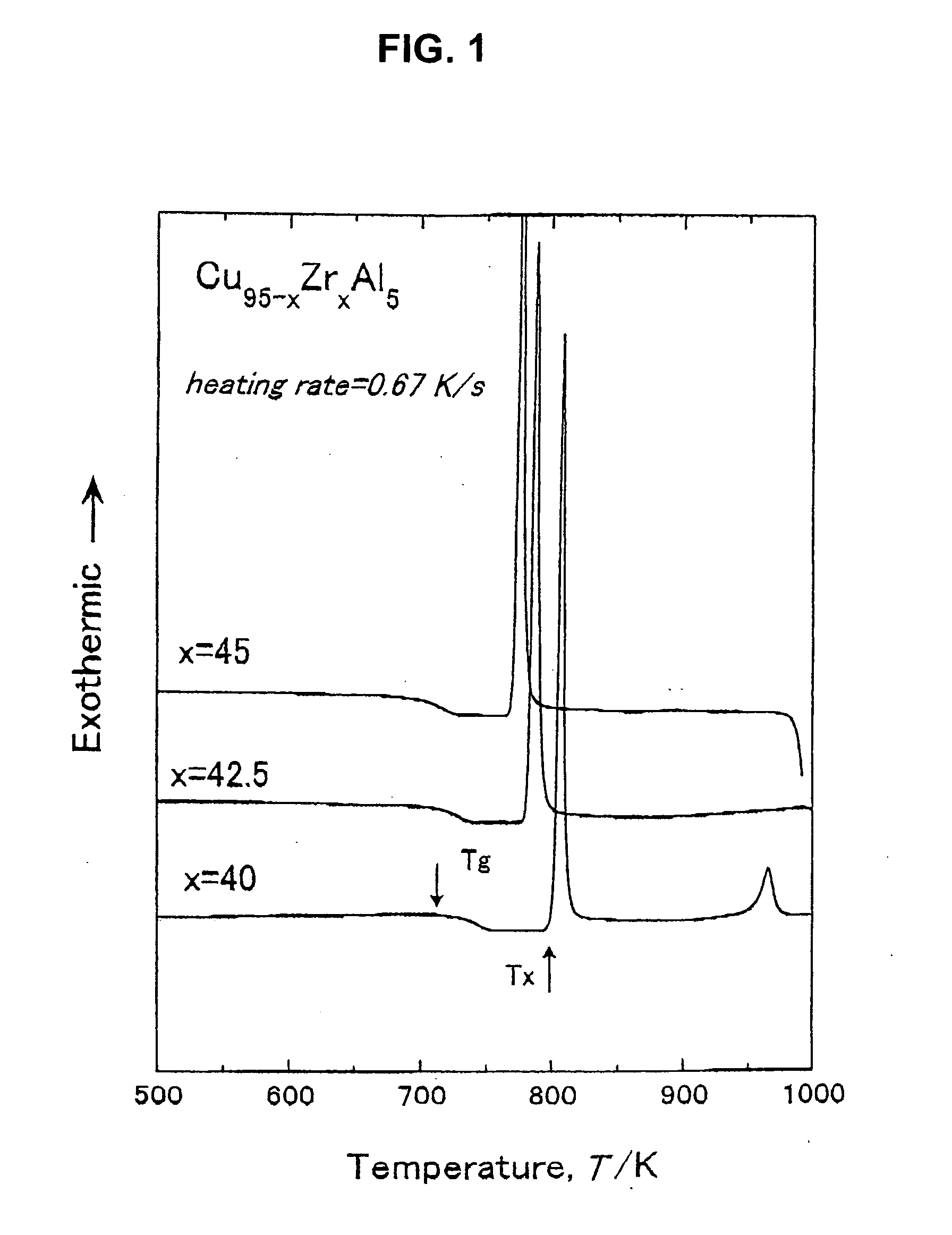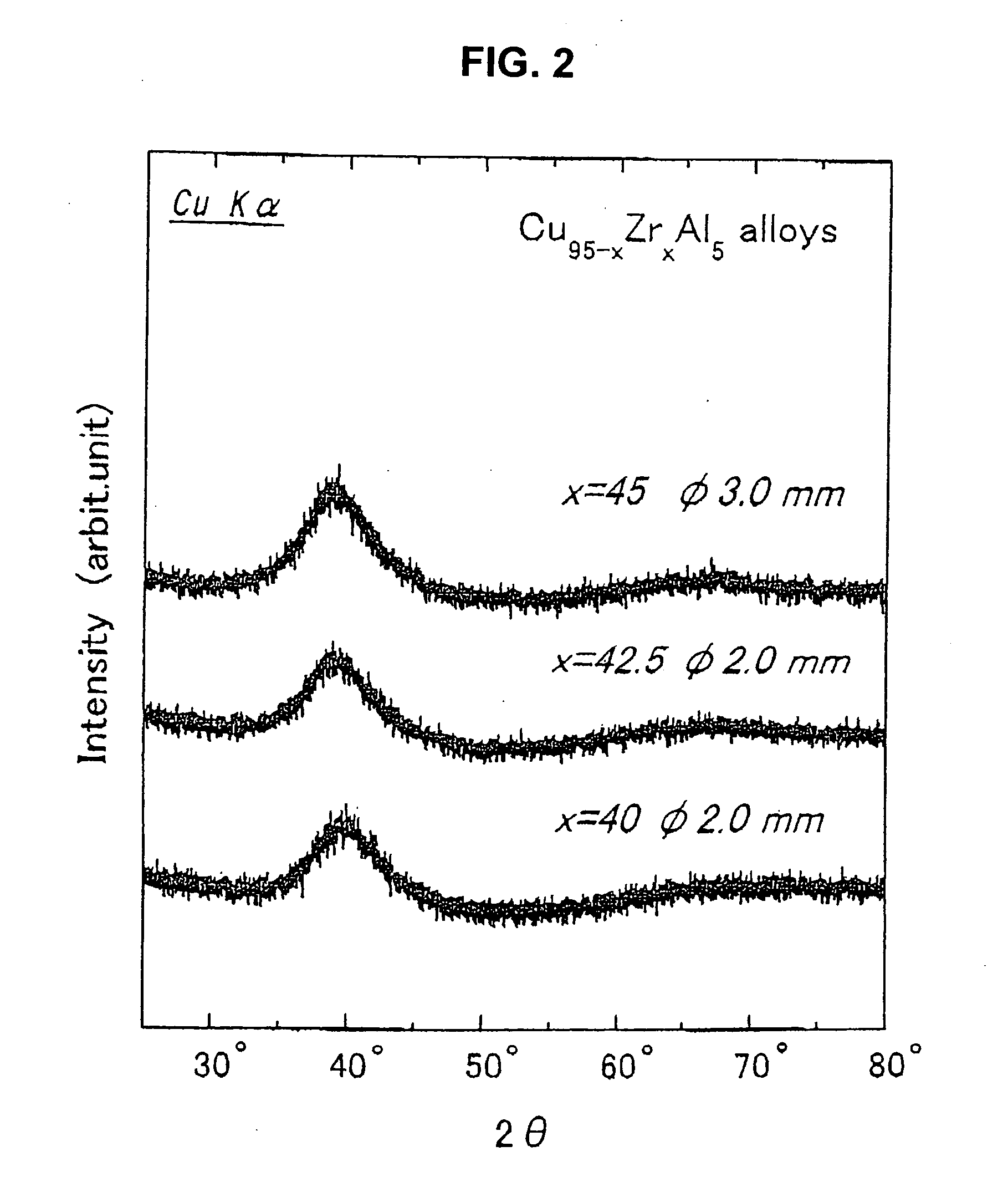Cu-base amorphous alloy
a technology of amorphous alloys and amorphous alloys, applied in the field of cu-base amorphous alloys, can solve the problems of inability to say that the alloy has adequate excellent workability, inconvenient practical use, and high cost of hf metal compared with zr metals,
- Summary
- Abstract
- Description
- Claims
- Application Information
AI Technical Summary
Benefits of technology
Problems solved by technology
Method used
Image
Examples
examples
[0031] The examples of the present invention will be described below. Mother alloys were prepared through melting from materials having alloy compositions shown in Table 1 (Examples 1 to 23) by an arc melting method. Thereafter, thin ribbon samples of about 20 μm were prepared by a single-roll liquid quenching process. Subsequently, the glass transition temperature (Tg) and the crystallization initiation temperature (Tx) of the thin ribbon sample were measured with a differential scanning calorimeter (DSC). The supercooled liquid region (Tx−Tg) was calculated from these values. The liquid phase line temperature (Tl) was measured by a differential thermal analysis (DTA). The reduced glass transition temperature (Tg / Tl) was calculated from these values. A rod-shaped sample having a diameter of 1 mm was prepared by the mold casting method, and an amorphous state of the sample was checked by an X-ray diffraction method.
[0032] The volume fraction (Vf-amo.) of amorphous phase contained i...
PUM
| Property | Measurement | Unit |
|---|---|---|
| Young's modulus | aaaaa | aaaaa |
| compressive strength | aaaaa | aaaaa |
| volume fraction | aaaaa | aaaaa |
Abstract
Description
Claims
Application Information
 Login to View More
Login to View More - R&D
- Intellectual Property
- Life Sciences
- Materials
- Tech Scout
- Unparalleled Data Quality
- Higher Quality Content
- 60% Fewer Hallucinations
Browse by: Latest US Patents, China's latest patents, Technical Efficacy Thesaurus, Application Domain, Technology Topic, Popular Technical Reports.
© 2025 PatSnap. All rights reserved.Legal|Privacy policy|Modern Slavery Act Transparency Statement|Sitemap|About US| Contact US: help@patsnap.com



